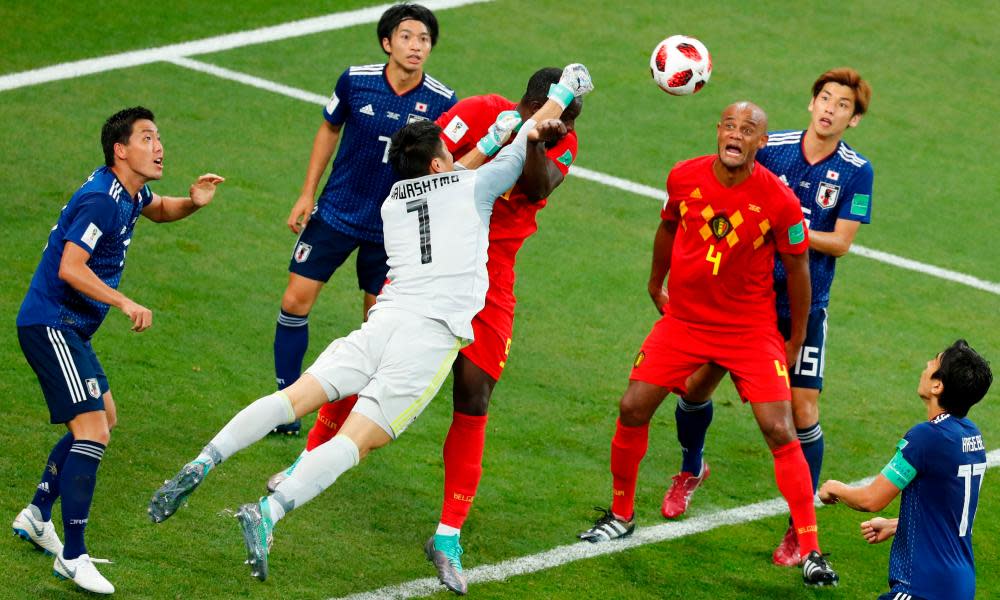The joys and challenges of covering the World Cup in the digital age

Sport unites, divides, exhilarates and deflates. The football World Cup finals in Russia did all that again these past four weeks.
For those who love football, the feats and the cross-cultural spectacle of this World Cup were especially memorable. I’m one, but like any readers’ editor I am often made aware that a proportion of readers are indifferent to sport, or to football. I ask those readers to regard this column as a curiosity conveying something of the Guardian’s thriving international presence.
The combined Guardian and Observer coverage has been anticipated, absorbed live and, in retrospect, disputed, translated, retweeted and much enjoyed by millions. The story of how that coverage was put together is too detailed to tell in full, but let this glimpse be a tribute to the professionalism of the many people involved. I also want to remind online readers that what is accessible for free does not come without significant cost. If you are not yet among the Guardian’s financial supporters, I urge you to consider the football writer Barney Ronay’s request for support for journalism of this scale and commitment.
It was striking how the editorial and technical teams deployed the technologies that today allow genuinely international events like World Cup finals to be experienced by huge, disparate yet interacting audiences. All 64 games were live blogged. The live coverage of the England win over Colombia was viewed – mostly on phones – more than 3.1m times, and England’s semi-final loss to Croatia more than 3.7m. The guide to all 736 players had more than 2m views. Sixteen other World Cup items were viewed more than 1 million times each.
The head of sport, Will Woodward, estimates that more than 100 people – staff and casuals in Guardian teams in the UK, US and Australia as well as in Russia – with a range of skills played some part in the coverage, which appeared in words and images on screens and in print, in podcasts and videos. Woodward emphasises that when he took up his role last April he was the beneficiary of planning by others that began last November when the 32 qualifier nations were settled. Eight sport staff went to Russia, joined by correspondents based in the region. The beauty and simplicity of much of the graphic design work, such as the Golden Boot (leading goalscorers) standings and charts about goals, enhanced enjoyment.
The international outlook of the contemporary Guardian was strongly evident in the coverage. Overall, the main audiences were in the UK (39%), US (19%), Canada (5%), India (5%) and Australia (3.7%), with strong contingents in Germany, France and Spain and smaller followings elsewhere. Rising hope about England’s prospects, although detectable in the office in London, was professionally restrained to prevent the coverage tipping into a kind of jingoism.
Audiences returned to the Guardian for matches that did not involve England. When Russia played Croatia in the quarter-finals, the live blog was viewed 1.64m times. France v Belgium had 1.1m views, and only 21% of the browsers looking in on it were in the UK.
The Guardian US office decided to support Mexico, and reports published in Spanish averaged 55,000 views. Four live blogs of Japan’s matches in Japanese were viewed a total of 250,000 times.
The coverage happened not in a traditionally slower summer news period, but alongside a burst of major news events. The Guardian live blog of the rescue last week of the boy footballers from a cave in Thailand was viewed 5.5m times. World Cup peak audiences exceeded peaks for political coverage in a period in which two senior UK government ministers resigned, and the visiting US president berated Nato allies and compounded his UK host’s difficulties with her party over Brexit.
As a journalistic challenge, the spread of the audience across regions and technologies is vastly different from the Guardian reports of World Cups in the print-only era. With help from the Guardian’s archives team I leafed through a few, to sharpen in my own mind the contrast with what today’s multi-platform world demands of journalists. The process also brought reminders that sport-as-politics is as much a constant as the disbelief of fans when favourites exit early, like Germany and some others did this year.
An excerpt from the 1938 coverage: “Rome – Forty thousand spectators, including Signor Mussolini, saw Italy win the world football ‘championship’ this afternoon by defeating Czecho-Slovakia 2-1 in the final at the Fascist Stadium.” Yes, that was the name of the venue.
Cultural differences in playing the same game were as evident then and they have been in Russia lately. The reporter in Rome continued: “The game was a contrast between the cool, well co-ordinated play of the Czecho-Slovakians and the more dashing and individualistic performances of the Italians. The Italians won because they were faster …”
In 1950 horrified Guardian readers queried whether there was an error in the report from Brazil that England had been ousted by the United States 1-0.
Humour was a key ingredient of the Guardian’s latest World Cup coverage. The bantering World Cup Football Daily podcast was, Woodward tells me, “a brand leader despite plenty of opposition including from the BBC. It is one of our greatest multimedia successes.”
A delightful feature was the strip cartoons by David Squires, who observed that England “have cunningly avoided the winners’ curse for 2022”.
Sport – it’s about many things, but mainly it’s about hope.
• Paul Chadwick is the Guardian’s readers’ editor

 Yahoo News
Yahoo News 
